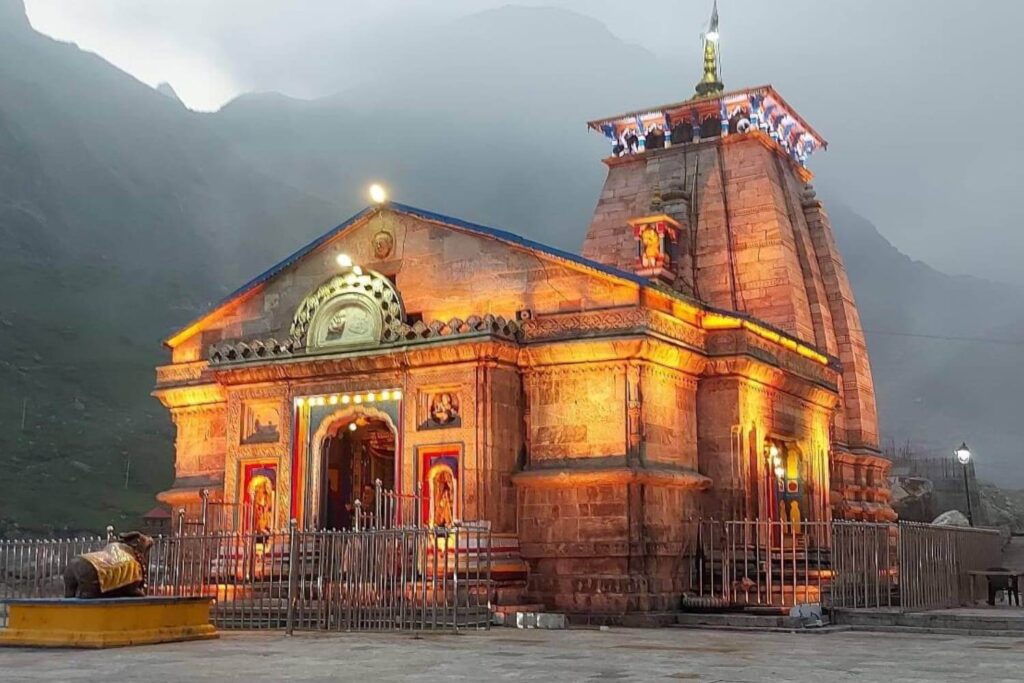
How to plan Kedarnath trip?
Get ready for an adventure of a lifetime! Nestled amidst the majestic Himalayas, Kedarnath is not just a destination; it’s an experience. From the sacred temple of Lord Shiva to the breathtaking trekking trails, there’s something for everyone here. In this guide, we’ll walk you through the essentials of planning your Kedarnath trip, ensuring a seamless and memorable journey.
Best Time to Visit Kedarnath
Before packing your bags, it’s crucial to pick the right time to visit Kedarnath. For optimal weather conditions and fewer crowds, aim for May to June or September to October. These months offer pleasant temperatures and clear skies, perfect for exploring the region without any hassles.
Minimum Number of Days for a Kedarnath Trip
While a quick visit may seem tempting, we recommend dedicating at least three to four days to fully immerse yourself in the beauty and spirituality of Kedarnath. This timeframe allows ample time for temple visits, trekking, and soaking in the serene ambiance of the Himalayas.
How to Reach Kedarnath
Reaching Kedarnath requires careful planning, but fret not, as there are several convenient options available:
By Air
The nearest airport to Kedarnath is the Jolly Grant Airport in Dehradun, approximately 250 kilometers away. From Dehradun, you can hire a taxi or opt for a helicopter service to reach Kedarnath. The helicopter ride offers breathtaking aerial views of the Himalayas and significantly reduces travel time.
By Rail
If you prefer traveling by train, head to Rishikesh, the nearest railway station to Kedarnath, located about 220 kilometers away. From Rishikesh, you can hire a taxi or board a bus to reach Gaurikund, the base camp for the Kedarnath trek.
By Road
Kedarnath is well-connected by roadways, with regular bus services from major cities like Delhi, Haridwar, and Dehradun. You can also hire a private taxi or opt for shared jeep services for a more comfortable journey. The road journey offers scenic views of the lush valleys and cascading rivers, providing a memorable travel experience.
Helicopter Options
For those seeking a quicker and more convenient mode of transportation, helicopter services are available from various helipads to Kedarnath. Helicopter services operate from destinations like Phata, Guptkashi, and Sersi, offering passengers a bird’s-eye view of the majestic Himalayan peaks. It’s advisable to book helicopter tickets in advance, especially during peak seasons, to avoid last-minute hassles.
Kedarnath by Walk/Mules/Helicopters:
Once you’ve reached Gaurikund, the gateway to Kedarnath, you have multiple options to reach the temple:
- By Walk: Embark on the classic trekking route from Gaurikund to Kedarnath, spanning approximately 16 kilometers. The trek offers breathtaking views of the surrounding mountains, lush forests, and cascading waterfalls. Along the way, you’ll encounter quaint villages, refreshment stalls, and resting points, making the journey both scenic and memorable.
- By Mules: If trekking isn’t your cup of tea, you can opt for a mule ride from Gaurikund to Kedarnath. Mules are available for hire at Gaurikund and provide a comfortable alternative for travelers seeking a leisurely journey. The mule ride offers panoramic views of the landscape while allowing you to relax and soak in the natural beauty.
- By Helicopters: For those short on time or unable to undertake the strenuous trek, helicopter services offer a convenient and swift mode of transportation to Kedarnath. Helicopter rides provide passengers with mesmerizing aerial views of the Himalayas and reduce travel time significantly. While the helicopter ride is more expensive than other options, it’s worth considering for its comfort and convenience, especially for elderly or physically challenged pilgrims.
Places to See in Kedarnath
Kedarnath is replete with cultural landmarks, natural wonders, and spiritual sanctuaries, each offering a unique experience:
Kedarnath Temple
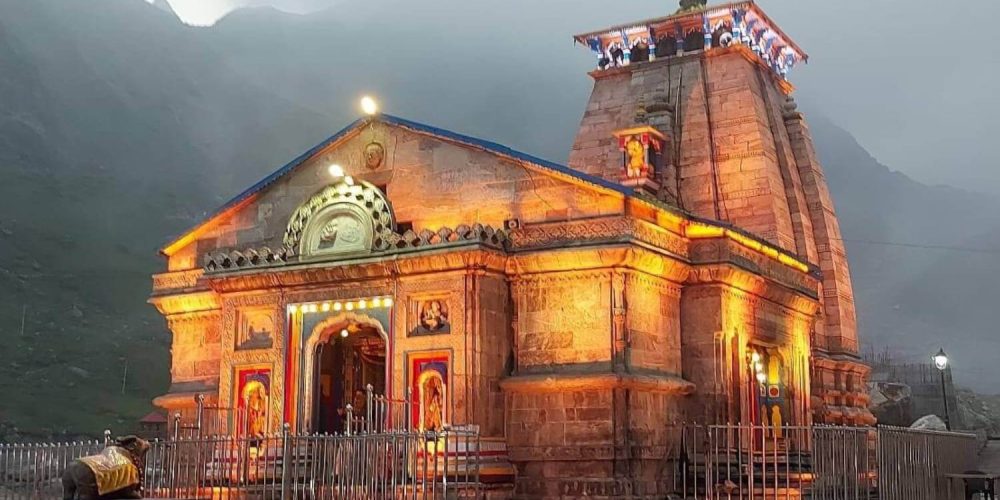
The holiest of the holy, the Kedarnath Temple is dedicated to Lord Shiva and holds immense significance in Hindu mythology. Perched at an altitude of 3,583 meters, the temple stands as a testament to ancient architecture and religious fervor. Pilgrims from far and wide flock to Kedarnath to seek the blessings of Lord Shiva and attain spiritual enlightenment.
Gandhi Sarovar
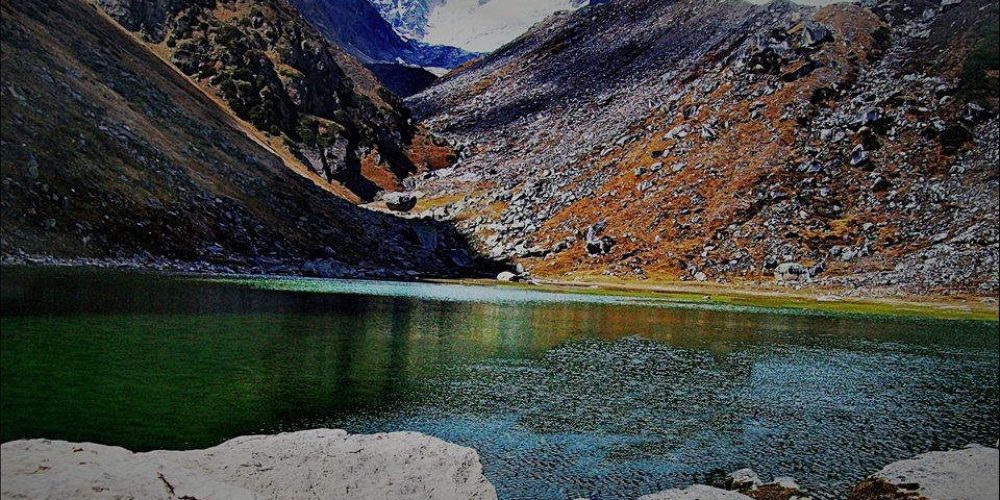
Also known as Chorabari Tal, Gandhi Sarovar is a pristine lake located near Kedarnath Temple. Surrounded by snow-capped peaks and verdant meadows, the lake offers a serene retreat for travelers seeking solace amidst nature’s bounty. Legend has it that Mahatma Gandhi visited this lake during his pilgrimage to Kedarnath, hence the name.
Kalimath Bhairav Temple
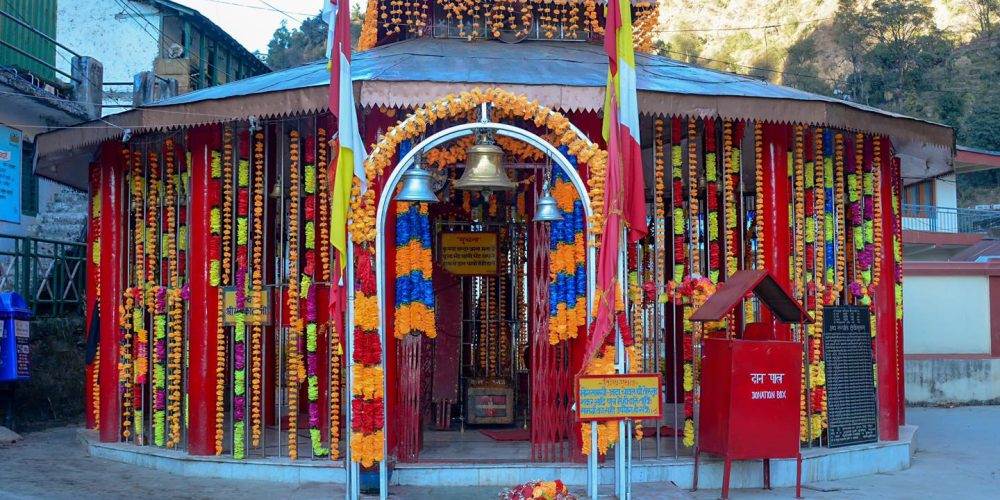
Situated atop a hill near Kedarnath, Kalimath Bhairav Temple is dedicated to Lord Bhairav, an incarnation of Lord Shiva. The temple offers panoramic views of the surrounding valleys and is frequented by devotees seeking divine blessings and protection. The trek to Kalimath Bhairav Temple is steep but rewarding, with every step offering a glimpse into the mystical realm of spirituality.
Gaurikund Temple

Gaurikund, named after Goddess Parvati (Gauri), is a significant pilgrimage site located near Kedarnath. According to Hindu mythology, Goddess Parvati performed rigorous penance at Gaurikund to win the affections of Lord Shiva. Pilgrims visit this temple to pay homage to Goddess Parvati and seek her blessings for marital bliss and prosperity.
Shankaracharya Samadhi
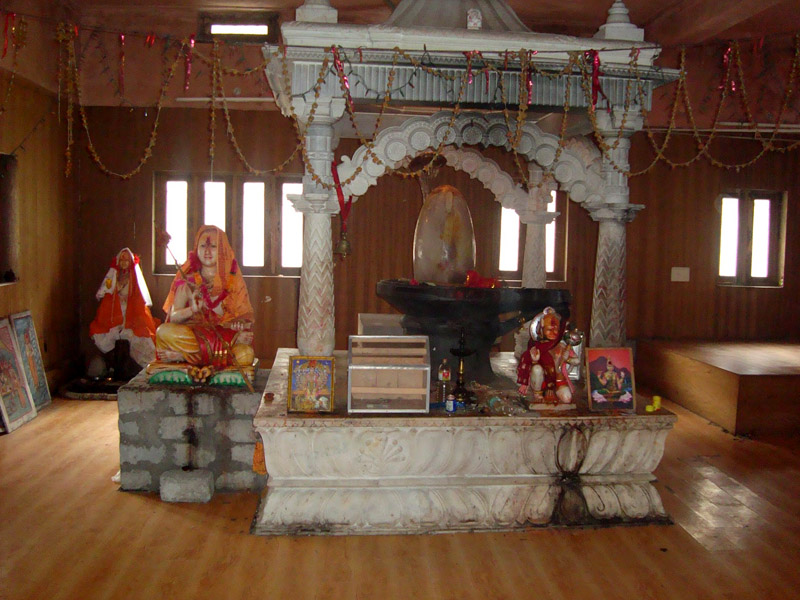
Adjacent to the Kedarnath Temple lies the final resting place of Adi Shankaracharya, the renowned philosopher and saint. Shankaracharya Samadhi is revered as a sacred site by devotees and serves as a reminder of Adi Shankaracharya’s profound influence on Hinduism and spiritual philosophy. Pilgrims pay their respects to Adi Shankaracharya and seek his blessings for enlightenment and spiritual awakening.
What to Do Around Kedarnath
Beyond the confines of the temple town, Kedarnath offers a plethora of attractions and activities for travelers to explore
Vasuki Tal Lake
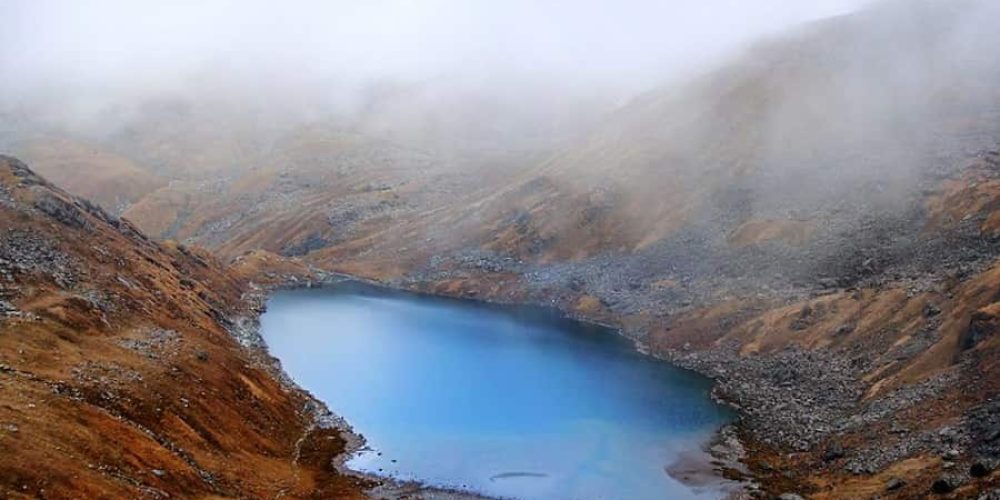
Embark on an exhilarating trek to Vasuki Tal, a high-altitude lake located amidst the Himalayan peaks. The trek to Vasuki Tal offers stunning views of snow-capped mountains, lush valleys, and alpine meadows, making it a paradise for nature lovers and adventure enthusiasts. The lake is believed to be the abode of the serpent deity Vasuki, adding to its mystical allure.
Guptakashi
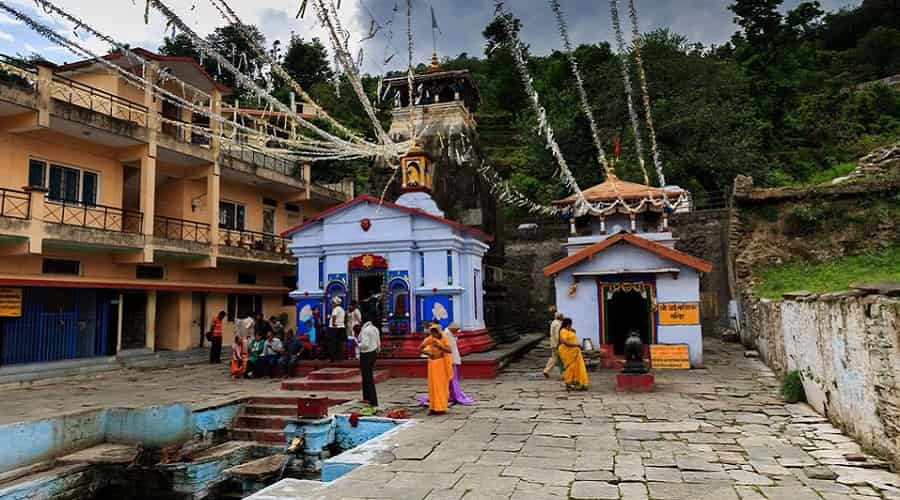
Explore the charming town of Guptakashi, located near Kedarnath, and discover its cultural heritage and natural beauty. Guptakashi is home to several ancient temples, including the Vishwanath Temple and Ardhanarishvara Temple, each steeped in mythological significance and architectural grandeur. Travelers can also visit Manikarnik Kund, a sacred bathing ghat believed to cleanse sins and bestow divine blessings.
Kedarnath Trek
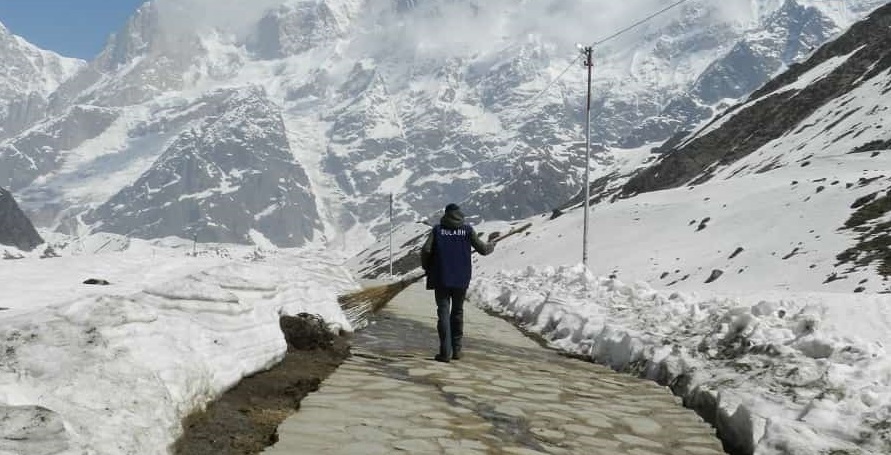
Set out on the adventure of a lifetime with the Kedarnath Trek, a multi-day hiking expedition that traverses rugged terrain, dense forests, and mountain passes. The trek begins from Gaurikund and follows a well-marked trail that meanders through picturesque villages, gurgling streams, and alpine meadows.
Along the way, trekkers encounter diverse flora and fauna, including rare Himalayan birds and wildflowers, adding to the allure of the journey. The trek culminates at the revered Kedarnath Temple, where pilgrims offer prayers and seek spiritual solace amidst the towering peaks of the Himalayas.
Char Dham Yatra
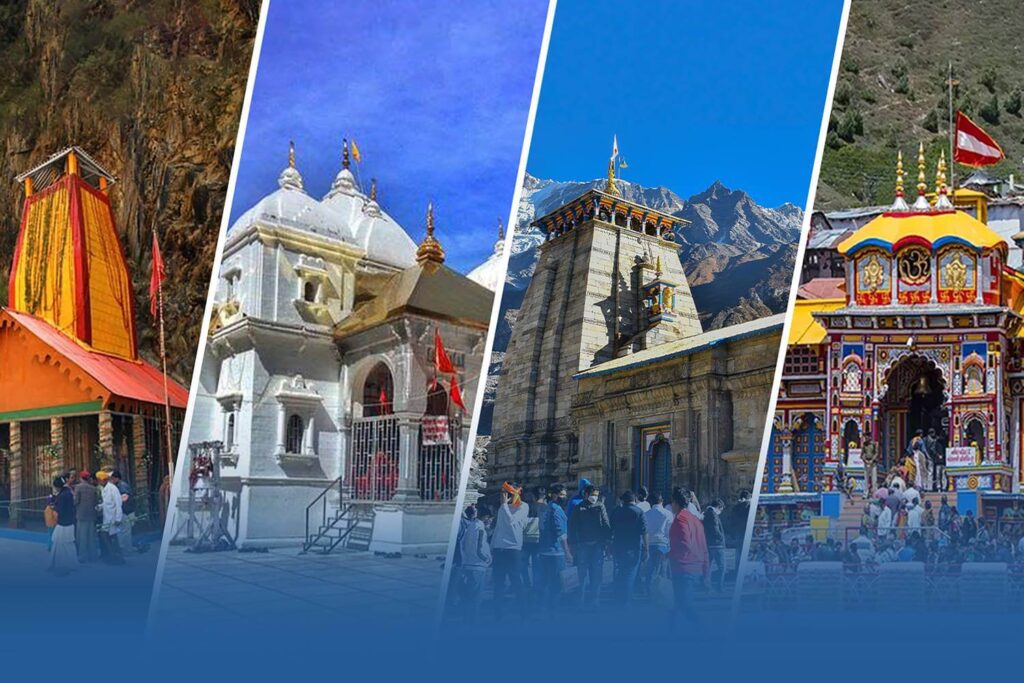
Embark on the sacred Char Dham Yatra, a pilgrimage circuit that encompasses four holy sites in the Indian state of Uttarakhand, including Kedarnath. The Char Dham Yatra is considered one of the holiest journeys in Hinduism and holds immense significance for devotees seeking spiritual redemption and salvation. Pilgrims undertake the arduous journey to Kedarnath, along with Gangotri, Yamunotri, and Badrinath, to pay homage to the presiding deities and attain liberation from the cycle of birth and death.
Best Places to Stay Near Kedarnath
After a day of exploration and adventure, unwind and recharge at these comfortable accommodations near Kedarnath:
GMVN Tourist Rest House
Operated by the Garhwal Mandal Vikas Nigam (GMVN), the Tourist Rest House offers comfortable rooms and basic amenities for pilgrims and travelers. The rest house is strategically located near the Kedarnath Temple, providing easy access to the sacred site and breathtaking views of the surrounding mountains.
Camps and Tents
Experience the thrill of camping amidst the pristine wilderness with various camping options available near Kedarnath. Camping is an excellent choice for travelers seeking an immersive outdoor experience and a chance to connect with nature. Several campsites offer well-equipped tents, bonfire facilities, and guided treks, ensuring a memorable stay under the starlit sky.
Hotels and Guesthouses
Treat yourself to a luxurious stay at hotels and guesthouses in nearby towns like Guptakashi and Sonprayag, offering modern amenities and warm hospitality. These accommodations provide comfortable rooms, delectable cuisine, and stunning views of the surrounding landscape, allowing travelers to unwind and rejuvenate after a day of exploration.
Things to Keep in Mind When Planning Kedarnath Trip
Before embarking on your Kedarnath journey, here are some essential tips to ensure a smooth and hassle-free experience:
- Pack Wisely: Carry essential items such as warm clothing, comfortable footwear, sunscreen, and water bottles to stay prepared for varying weather conditions and terrain challenges.
- Stay Hydrated: Drink plenty of water and stay hydrated throughout your journey to prevent dehydration and altitude sickness. Carry water bottles or hydration packs and refill them at designated water points along the trekking route.
- Respect Local Customs: Show respect for the local culture and traditions of Kedarnath by following established norms and practices. Dress modestly while visiting temples and religious sites, and refrain from engaging in activities that may offend local sentiments.
- Be Mindful of Altitude: Kedarnath is located at a high altitude, and travelers may experience symptoms of altitude sickness, such as headaches, nausea, and fatigue. Take adequate rest, stay hydrated, and acclimatize gradually to minimize the risk of altitude-related ailments.
- Plan Ahead: Plan your itinerary and make necessary bookings for accommodations, transportation, and permits well in advance, especially during peak seasons. Check weather forecasts and trail conditions before embarking on trekking expeditions, and carry necessary maps, GPS devices, and emergency supplies for safety.
About Kedarnath
Learn more about the history, mythology, and significance of Kedarnath
History & Mythology
Kedarnath holds a rich tapestry of history and mythology, dating back thousands of years. According to Hindu legend, the temple of Kedarnath is one of the twelve Jyotirlingas, representing the divine manifestation of Lord Shiva. The present-day temple is believed to have been constructed by Adi Shankaracharya in the 8th century CE, atop the site where Lord Shiva is said to have manifested as a cosmic pillar of light.
Location
Situated at an altitude of 3,583 meters (11,755 feet) above sea level, amidst the Garhwal Himalayas, Kedarnath offers a surreal backdrop of snow-capped peaks, glacial valleys, and emerald meadows. The temple town is located in the Rudraprayag district of the Indian state of Uttarakhand, near the headwaters of the Mandakini River, a tributary of the Alaknanda River.
Weather
The weather in Kedarnath varies significantly throughout the year, with cold winters, mild summers, and monsoon rains. During the winter months (November to March), the region experiences heavy snowfall and freezing temperatures, making it inaccessible to travelers. The summer season (April to June) is characterized by mild temperatures and clear skies, making it the ideal time for pilgrimage and trekking expeditions. The monsoon season (July to September) brings heavy rainfall and landslides, posing challenges for travelers but also adding to the scenic beauty of the region.
How To Plan Kedarnath Trip - Conclusion
In conclusion, planning a trip to Kedarnath is a journey of discovery, spirituality, and adventure. Whether you’re seeking solace amidst ancient temples or thrill-seeking on rugged trekking trails, Kedarnath offers an experience like no other. By following this comprehensive guide and staying prepared for the challenges ahead, you can embark on a memorable expedition to Kedarnath, forging lifelong memories and spiritual connections amidst the breathtaking landscapes of the Himalayas. So pack your bags, lace up your hiking boots, and get ready for the adventure of a lifetime in the divine abode of Kedarnath!
Top Experiences In Kedarnath
Kedarnath temple
Guptakashi
Shankaracharya Samadhi
Gaurikund Temple
Gandhi Sarovar
Char Dham Yatra
FAQs
Q. How much does a trip to Kedarnath cost?
A. The approximate budget for a Kedarnath trip in Indian Rupees is between INR 10,000 to INR 15,000 per person for a budget-friendly trip from Haridwar1. This includes the cost of transportation, basic accommodations, and food. The cost may vary depending on the season, the mode of transportation, the accommodation, and the activities you choose to do. You can also opt for a Kedarnath tour package that includes nearby destinations like Haridwar, Guptakashi, Badrinath, Rudraprayag, Joshimath, and Rishikesh, which can range from INR 24,500 to INR 1,10,000 per person.
Q. How many days do we need for Kedarnath?
A. The number of days you need for Kedarnath depends on your personal preference and fitness level. However, a typical itinerary that covers all the major attractions and activities in Kedarnath and its surroundings is as follows:
Day 1: Arrival in Rishikesh or Haridwar
Day 2: Drive from Rishikesh or Haridwar to Gaurikund (8-9 hours)
Day 3: Trek from Gaurikund to Kedarnath (16 km, 6-7 hours)
Day 4: Explore Kedarnath and acclimatization
Day 5: Trek from Kedarnath to Gaurikund (16 km, 4-5 hours)
Q. Which month is best for the Kedarnath trip?
A. The best time to visit Kedarnath is during the summer months of May-June or September-October, when the weather is pleasant and clear, and the landscape is lush green and scenic. However, you should also consider the religious significance of Kedarnath Temple, which is one of the Char Dham pilgrimage sites where Hindus can achieve instant moksha. Therefore, you should plan your trip according to your faith and convenience.
Q. How do you plan a trip from Delhi to Kedarnath?
A. The best way to plan a trip from Delhi to Kedarnath is to reach Gaurikund, which is the starting point of the Char Dham trek and the base camp for Kedarnath Temple. You can reach Gaurikund by road from Rishikesh or Haridwar, which are both major pilgrimage cities in Uttarakhand. The drive from Rishikesh or Haridwar to Gaurikund can take about 8-9 hours. You can also opt for a Kedarnath tour package that includes Haridwar, Guptakashi, Badrinath, Rudraprayag, Joshimath, and Rishikesh, which will make your trip more convenient and memorable.
Q. When is the best time to visit Kedarnath?
A. The best time to visit Kedarnath is during the summer months of May-June or September-October, when the weather is pleasant and clear, and the landscape is lush green and scenic. However, you should also consider the religious significance of Kedarnath Temple, which is one of the Char Dham pilgrimage sites where Hindus can achieve instant moksha. Therefore, you should plan your trip according to your faith and convenience.
Q. What are the timings for Kedarnath Dham Temple?
A. The timings for Kedarnath Dham Temple are as follows:
Sunrise: 4:00 AM
Sunset: 6:00 PM
Aarti: 5:00 PM
Prasad: 6:00 PM
Temples are open from 4:00 AM to 6:00 PM, with a break for lunch
Q. What is Kedarnath famous for?
A. Kedarnath is famous for its natural beauty, spiritual significance, and adventurous treks. It is one of the holiest shrines dedicated to Lord Shiva and a part of the Char Dham pilgrimage circuit. It is also known for its scenic views of the snow-capped peaks, lush green valleys, and pristine lakes. It offers a variety of activities that will appeal to different tastes and preferences, such as trekking, camping, meditation, and yoga.
Q. Are you planning on taking the Kedarnath Yatra?
A. Yes, I am planning on taking the Kedarnath Yatra, which is a holy pilgrimage that involves trekking from Gaurikund to Kedarnath Temple and back. The trek takes about 16 km and takes about 6-7 hours each way. The trek offers stunning views of the Himalayas and the temple, as well as an opportunity to experience the rustic and simple life of the villagers.
Q. When will the Kedarnath Temple be open?
A. The Kedarnath Temple is open throughout the year, but it may be closed during certain seasons due to snow or weather conditions. The temple opens at 4:00 AM and closes at 6:00 PM, with a break for lunch. The temple offers various rituals and ceremonies that are performed by priests and devotees5.
Q. What are the different routes to reach Kedarnath?
A. The different routes to reach Kedarnath are as follows:
By road: You can reach Gaurikund by road from Rishikesh or Haridwar, which are both major pilgrimage cities in Uttarakhand. The drive from Rishikesh or Haridwar to Gaurikund can take about 8-9 hours.
By trek: You can also reach Kedarnath by trekking from Gaurikund or other nearby places such as Vasuki Tal or Chandrashila. The trek offers various levels of difficulty and duration that suit different abilities and preferences2.
Q. Are there any specific permits or passes required for visiting certain areas in Kedarnath?
A. Yes, there are some specific permits or passes required for visiting certain areas in Kedarnath. For example:You need a valid ID proof and a registration card to enter the Kedarnath Temple premises.
You can get the registration card online or at the designated counters in Rishikesh, Haridwar, or Gaurikund.
You need a forest permit to trek to Vasuki Tal or Chandrashila, which are located in the Kedarnath Wildlife Sanctuary. You can get the forest permit at the forest check post near Gaurikund or the Kedarnath Temple office.
